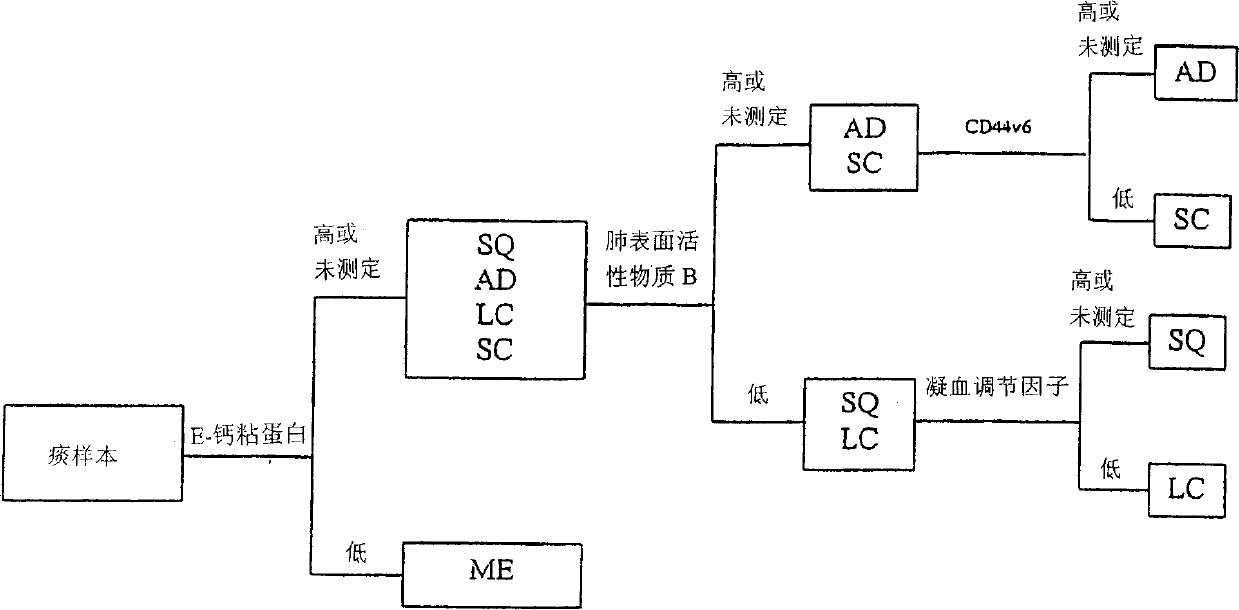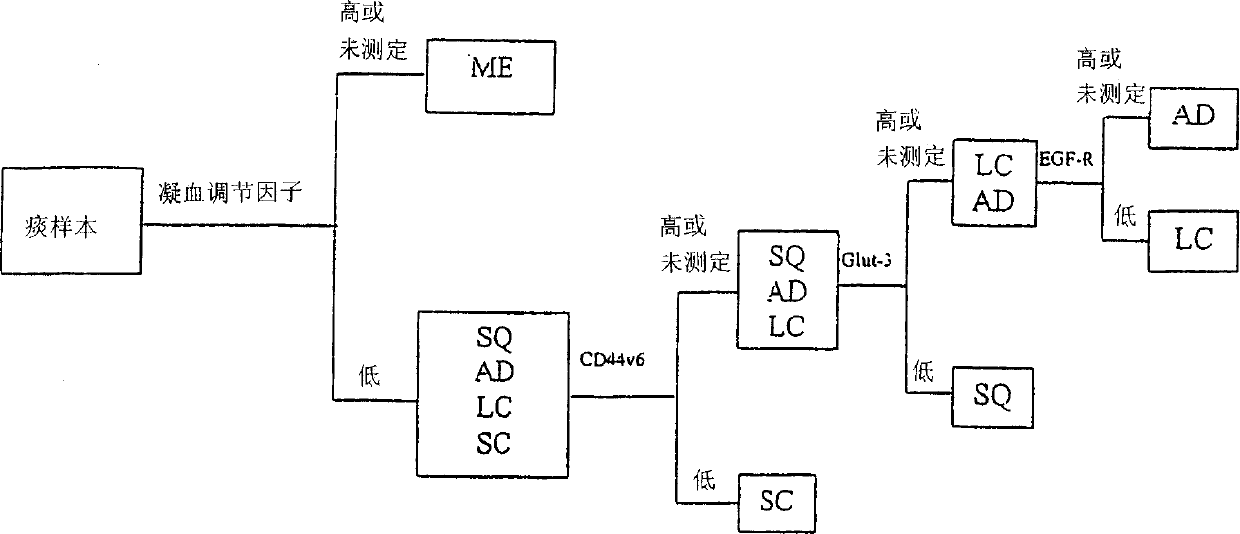Cell-based detection and differentiation of disease states
A cell and disease technology, applied in the field of early detection, can solve the problem of not finding the magic bullet probe and so on
- Summary
- Abstract
- Description
- Claims
- Application Information
AI Technical Summary
Problems solved by technology
Method used
Image
Examples
preparation example Construction
[0118] Preparation of specimens for analysis involves spreading samples on glass slides using methods including, but not limited to, smears, centrifugation, or deposition of cell monolayers. These methods can be manual, semi-automatic or fully automatic. The cell suspension can be aspirated to allow the cells to settle on the filter, and the cell monolayer is transferred to a prepared glass slide and can be processed for further evaluation. This process can also be repeated to prepare additional slides as necessary. The invention includes the detection of one molecular marker per slide. It also involves detection of several molecular markers per slide. Preferably, 1-6 markers are detected per slide. In some embodiments, 2 markers are detected per slide. In other embodiments, 3 markers are detected per slide.
[0119] The present invention involves the detection of altered expression of molecular markers at the DNA, RNA or protein level using one of a number of methods ava...
Embodiment I-VI
[1147] VII. Summary of Examples I-VI
[1148] Examples I-VI above provide preferred probes / labels for inclusion in probe sets for the detection and / or diagnosis of lung cancer, colorectal cancer, bladder cancer, prostate cancer, breast cancer and cervical cancer. Figures 8a-c provide a summary of preferred probes / markers for each cancer type. Figures 8a-c also identify which markers are useful for general cancer detection purposes, and which markers are more valuable due to specificity for specific cancer types. For example, EGFR and Ki-67 can be used for general cancer detection. BL2-10D1, CD44v3, collagenase, COX-1, HLA-DR, HSP-90, IL-6, IL-10, Lewis X, AP-22, TGF-β1, TGF-1I, TGF1II and UBC can be used for bladder Detection and / or diagnosis of cancer, AE1 / AE3, BCA-225, BRCA-1, CA-15.3, cathepsin D, GCDFP-15, HOX-B3, p65, PR and TGK can be used for the detection and / or Diagnosis, Cyclin E, E6 and E7 can be used for the detection and / or diagnosis of cervical cancer, AKT, am...
PUM
 Login to View More
Login to View More Abstract
Description
Claims
Application Information
 Login to View More
Login to View More - R&D
- Intellectual Property
- Life Sciences
- Materials
- Tech Scout
- Unparalleled Data Quality
- Higher Quality Content
- 60% Fewer Hallucinations
Browse by: Latest US Patents, China's latest patents, Technical Efficacy Thesaurus, Application Domain, Technology Topic, Popular Technical Reports.
© 2025 PatSnap. All rights reserved.Legal|Privacy policy|Modern Slavery Act Transparency Statement|Sitemap|About US| Contact US: help@patsnap.com



